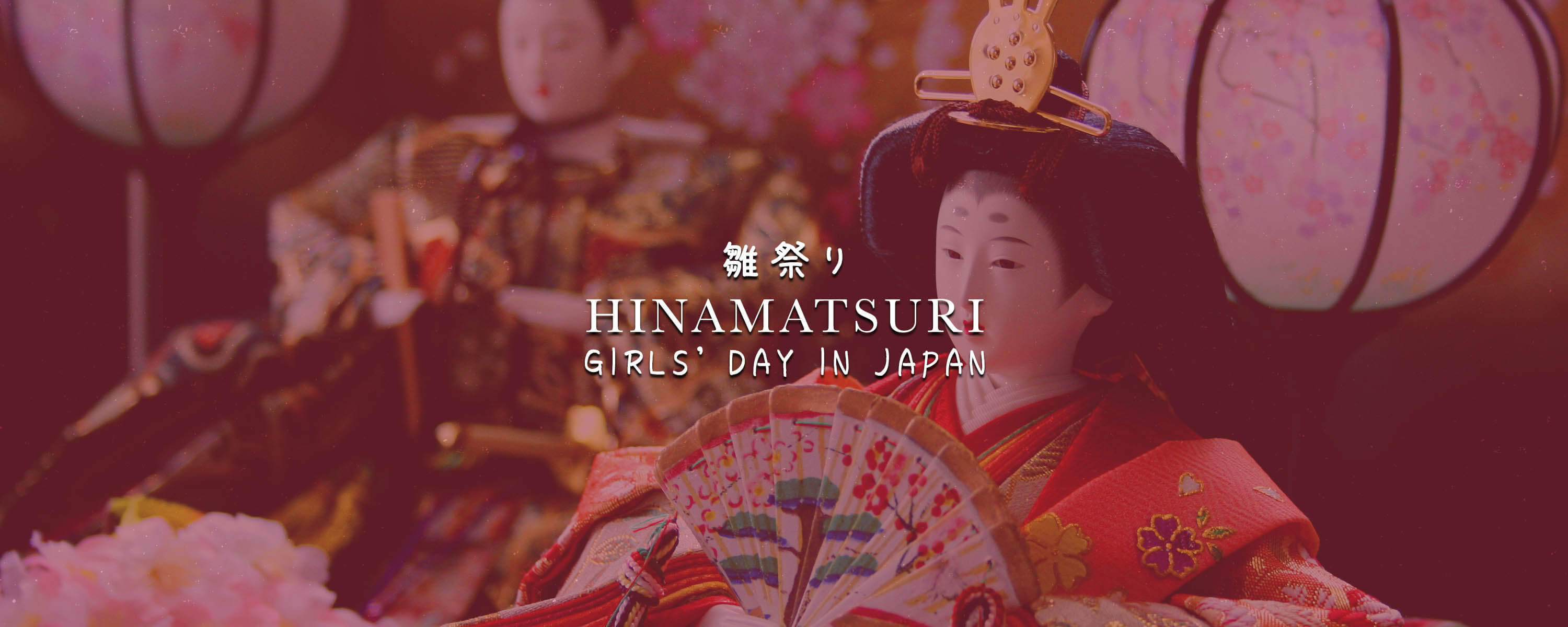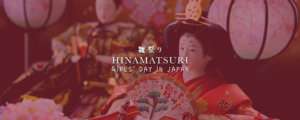Happy Hinamatsuri, everyone! Hinamatsuri (literally “Doll Festival” but also known as “Girls’ Day”) is celebrated each year on March 3. Families set up displays featuring dolls and pray for the growth, health, and happiness of their daughters. Hinamatsuri is also known as 桃の節句 (momo no sekku, “peach festival”), due to peach blossoms sprouting up around the holiday. While marking the arrival of spring, peach blossoms were also believed to ward off evil spirits. This similarity could be why both the blossoms and the dolls share a holiday.
The Origin of Hinamatsuri
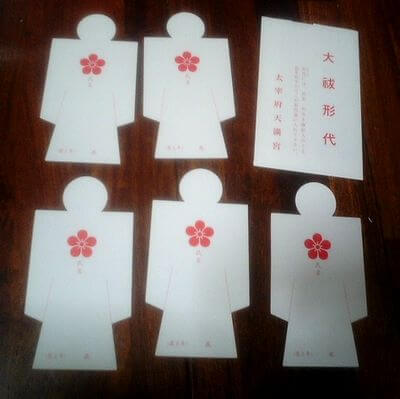
Hinamatsuri is part of the gosekku group of holidays. Gosekku (五節供) refers to the five seasonal festivals that are celebrated during the year. These holidays were first observed during the Heian period (794-1185). As time passed, the March festival incorporated the making of hitogata or paper dolls. While the dolls were toys for aristocratic children, they also acted as katashiro. As katashiro, the paper dolls would be used in the process of purification and would either be burned or placed in a body of water, such as a river. This process was believed to remove an individual’s sins, illnesses, and bad fortune. The practice of displaying dolls for the holiday began during the Edo period (1603-1868) as another method for warding off evil spirits. Hinamatsuri was legally established as a holiday in 1687.
The Doll Display
The main decoration for the holiday is, of course, the doll display. Hand-crafted dolls dressed in Heian period clothing are set atop a hinadan, which consists of red-carpeted, multi-level tiers. Traditionally, hinadan are five or seven-tiered displays, but due to modern-day space constraints, a single tier is also quite popular.
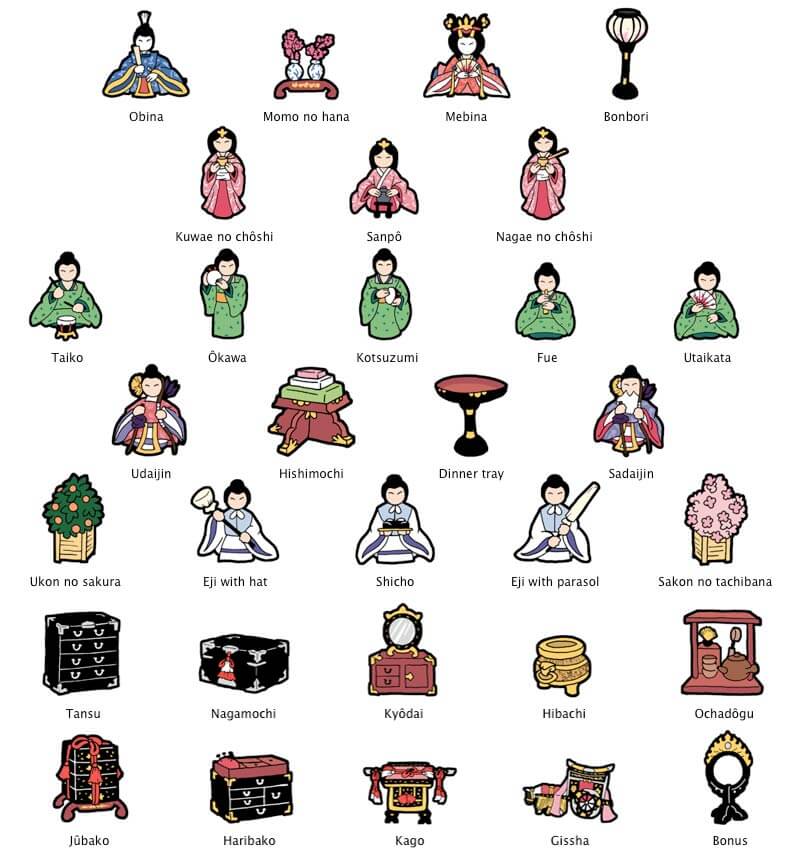
In the past, it’s likely that wealthy families would try to outdo one another with their displays, going far beyond five or seven levels. Even today, public displays may go well past the typical number of levels. In the five-tiered set-up, the platforms consist of:
- Odairisama (Obina) and Ohinasama (Mebina) – Emperor and Empress
- Sannin Kanjo – three ladies-in-waiting
- Gonin Bayashi – five musicians
- Zuishin (Udaijin and Sadajin) – minister on the left (older) and minister on the right (younger)
- Three guards, a cherry tree, and an orange tree
Additional tiers consist of various items such as small pieces of furniture and meal dishes. In a single tier display, only the Emperor and Empress are present. In all displays is a miniature golden screen acting as the royal couple’s backdrop. Displays are typically set up around the middle of February and put away as soon as Hinamatsuri ends. The rush to put them away is due to a superstition that keeping them out too long will make it difficult for your daughter to get married.
Modern Traditions
Like any holiday, there are plenty of different foods that are prepared for the celebration. Hishimochi are rice cakes made from pounded and steamed mochigome (glutinous or sticky rice). They are diamond-shaped and colored red/pink (for chasing evil spirits away), white (purity), and green (health).
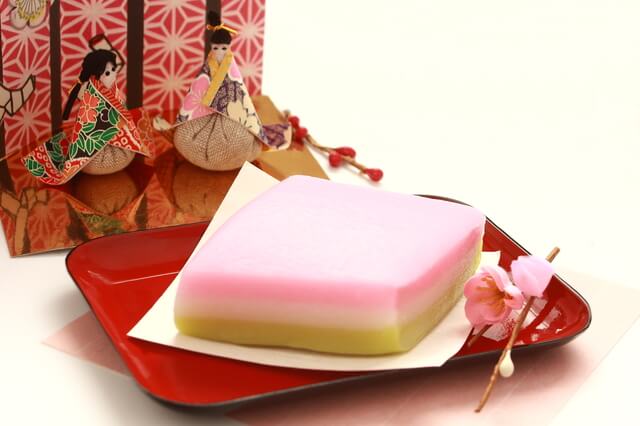
Hishimochi is placed in one of the meal dishes on the display, but can also be eaten by celebrants. Other dishes placed on the display are amazake (“sweet sake” that isn’t fully brewed) and hina-arare (pink and white rice crackers). Traditional food items are hamaguri ushio-jiru (clam soup) and chirashizushi (sushi rice with various ingredients like vegetables and seafood placed on top of it). Other festival foods include sakuramochi (rice cakes filled with anko bean paste and wrapped in cherry leaves) and sekihan (mochigome dyed red using azuki beans).
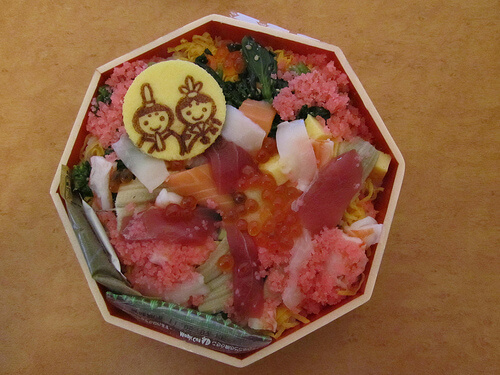
While hand-crafted dolls are traditionally used in Hinamatsuri displays, recent times have allowed for more variation. Dolls might be made out of paper and have animals in the roles of the traditional court. Naturally, there are also sets that include popular anime characters. As previously mentioned, public displays usually go all-out when setting up their hinadan.
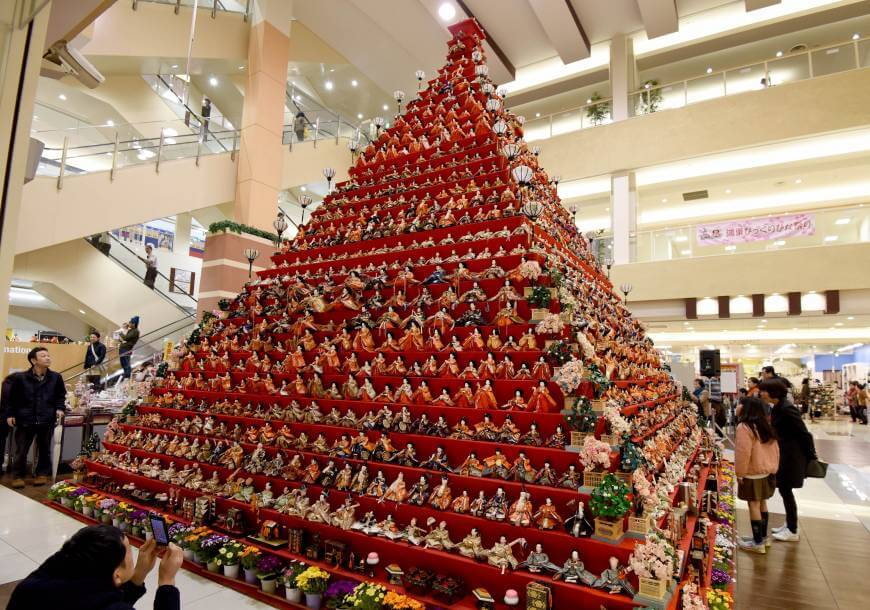
Last year, a shopping mall in front of Konosu Station in Saitama Prefecture had the impressive display above. Odds are that such public displays will only strive to become more elaborate as time goes on. It just goes to show that Hinamatsuri is no longer just a celebration for people with daughters, but a celebration of all of Japan’s girls.
Sources: Nippon, Kids Web Japan, A Page for Japanese Dolls, About, Hinamatsuri Food.

Featured Sponsor - JAST
The sweetest romance and the darkest corruption, the biggest titles and the indie darlings; for visual novels and eroge, there's nowhere better.
Big thank you to our supporters
From their continous support, we are able to pay our team for their time and hard work on the site.
We have a Thank-You page dedicated to those who help us continue the work that we’ve been doing.
See our thank you page